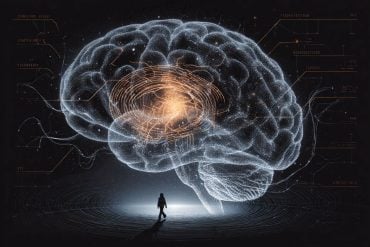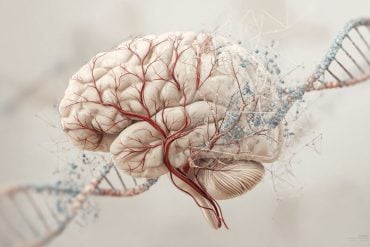A woman with bilateral damage relatively restricted to the amygdala is the subject of a case study recently reported.
SM, as she will be known to the public, seems able to experience emotions such as happiness and sadness normally, but shows no signs of fear.
This article offers more details about the remarkable SM and gives a glimpse into possible directions for the research to take such as non-invasively controlling the amygdala to reduce fear in PTSD sufferers.
When the brain knows no fear
A new study, published online on December 16 in Current Biology, a Cell Press publication, offers new insight into the emotional life of a unique individual who completely lacks the function of an almond-shaped structure in the brain known as the amygdala. Studies over the last 50 years have shown that the amygdala plays a central role in generating fear reactions in animals from rats to monkeys. Based on the detailed case study of the woman identified only as SM, it now appears that the same is true of humans.The finding offers a powerful take on the connection between the brain and behavior, specifically in the context of situations that would normally evoke fear, the researchers say.
“The nature of fear is survival and the amygdala helps us stay alive by avoiding situations, people, or objects that put our life in danger,” said Justin Feinstein of the University of Iowa. “Because SM is missing her amygdala, she is also missing the ability to detect and avoid danger in the world. It is quite remarkable that she is still alive.”
Feinstein says that the average person may have different definitions of fear, but his goal ultimately is to define emotions including fear based on the biological machinery that triggers them.
“Normally, the amygdala is constantly sorting through all the information coming into our brain through the different senses in order to rapidly detect anything that might impact our survival,” he explained. “Once it detects danger, the amygdala orchestrates a rapid full-body response that compels us to stay away from the threat, thereby improving our chances for survival.”
To explore this role of the amygdala, Feinstein and his Univeristy of Iowa team observed and recorded SM’s responses in a variety of situations that would make most people feel fear. They exposed her to snakes and spiders, took her to one of the world’s scariest haunted houses, and had her watch a series of horror films. They also had her fill out questionnaires probing different aspects of fear, from the fear of death to the fear of public speaking. On top of that, SM faithfully recorded her emotions at various times throughout the day while carrying around an electronic diary over a 3-month period. Across all questionnaires, measures, and scenarios, SM failed to experience fear.
That apparent lack of fear mirrored her personal experience, Feinstein said. “In everyday life, SM has encountered numerous traumatic events which have threatened her very existence, and by her report, have caused no fear. Yet, she is able to feel other emotions such as happiness and sadness. Taken together, these findings suggest that the human amygdala is a pivotal area of the brain for triggering a state of fear.”
Feinstein said he was most surprised at what happened when SM was presented with snakes and spiders in an exotic pet store. “For many years, SM has been telling us that she ‘hates’ snakes and spiders and ‘tries to avoid them.’ Going into the experiment, everyone, including myself, thought SM would stay away from these animals. Yet, to our surprise, she immediately started touching them! When asked why she was touching something that she claims to hate, she appeared perplexed by her own behavior and stated that she was overcome with curiosity. It was as if the part of the brain responsible for SM’s cognition and thoughts was completely disconnected from the part of the brain controlling her behavior.”
Feinstein says the new findings suggest that methods designed to safely and non-invasively turn off the amygdala might hold promise for those suffering from post-traumatic stress disorder (PTSD).
“This past year, I’ve been treating veterans returning home from Iraq and Afghanistan who suffer from PTSD,” he said. “Their lives are marred by fear, and they are oftentimes unable to even leave their home due to the ever-present feeling of danger. In striking contrast, SM is immune to these states of fear and shows no symptoms of post-traumatic stress. In essence, traumatic events leave no emotional imprint on SM’s brain. By understanding how the brain processes fear through cases like SM, we may one day be able to create treatments that selectively target the brain areas that allow fear to take over our lives.”
Contact: Elisabeth (Lisa) Lyons – Cell Press
Source: Cell Press









